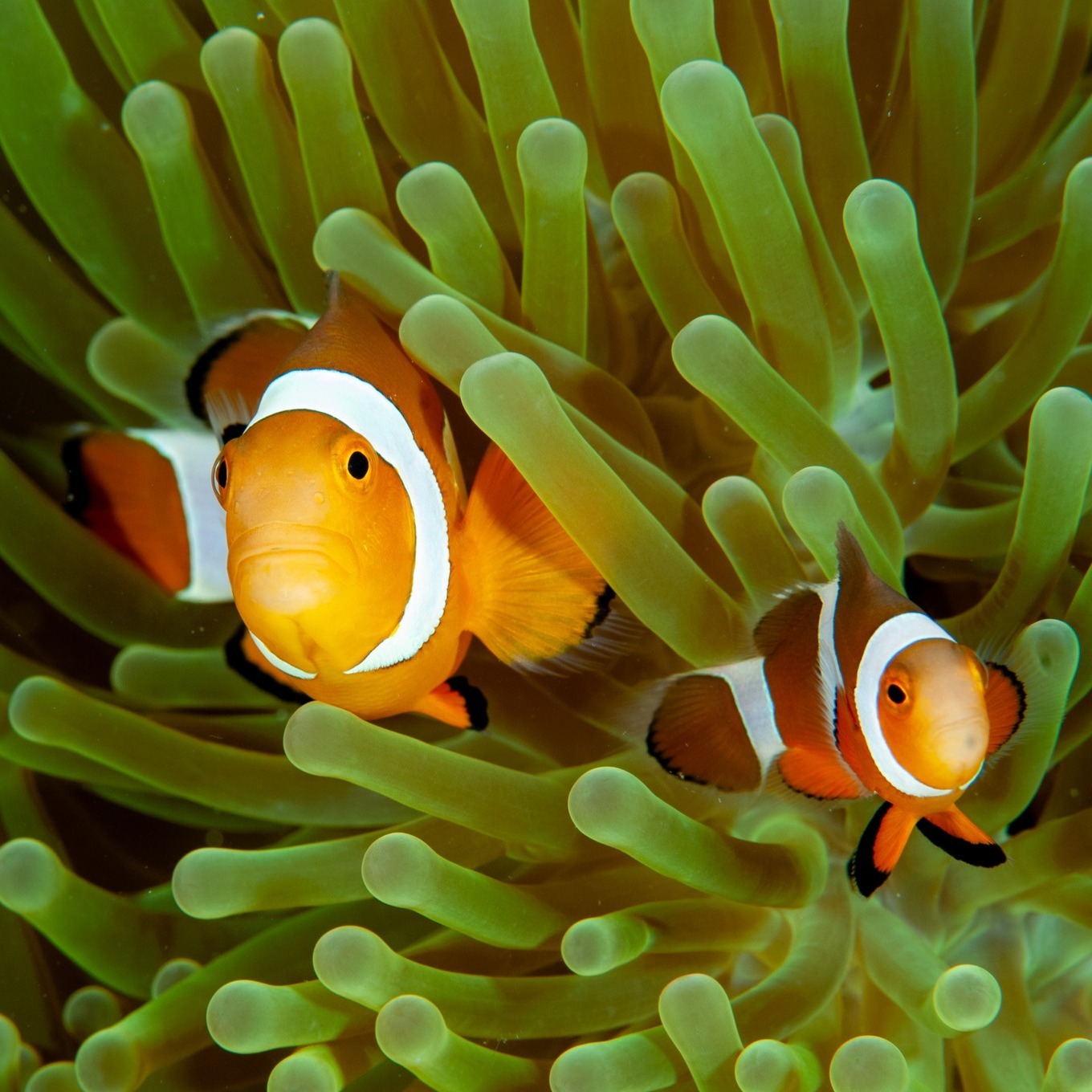- Clownfish exhibit fascinating sex-changing behaviors, re-defining traditional biological definitions of sex.
- The social hierarchy within clownfish communities operates on a matriarchal model, impacting their reproductive roles.
- Research highlights the connection between brain chemistry and sex in clownfish, challenging historical notions of gonadal definitions.
- Conservation efforts are crucial for the survival of clownfish habitats, emphasizing the relationship between species and their ecosystems.
- Clownfish life cycles and their interactions with anemones illustrate complex mutualistic relationships in marine biology.
Clownfish, known scientifically as Amphiprion ocellaris, have captured the imagination of audiences through their appearance in popular films. Their vivid orange and white coloration and endearing personalities made them stars of the ocean. However, beyond their Hollywood fame, clownfish societies are rich with unique behaviors, intriguing reproductive dynamics, and critical ecological roles. This article explores the fascinating aspects of clownfish, from their complex social structures to conservation challenges, and emphasizes their role as queer icons in the animal kingdom.
One of the most captivating features of clownfish is their ability to change sex. This phenomenon, known as sequential hermaphroditism, means that clownfish can transition from male to female as required by their social hierarchy. In every clownfish community, there exists a dominant female, paired with a dominant male. The rest of the group consists of smaller, non-reproducing clownfish. When the dominant female dies or departs, the dominant male undergoes a transformation. This change involves adjustments to size, reproductive organs, and brain chemistry, ultimately allowing the new female to take over the breeding responsibilities.
The process of sex change involves a significant reorganization of the clownfish’s biological makeup. For instance, researchers from the University of Illinois explored how clownfish could possess a "female brain" while retaining male-like gonads. These findings challenge conventional ideas of sex determination, which often focus solely on physical attributes such as reproductive organs. Instead, clownfish exhibit that sex is not merely binary but can exist on a spectrum influenced by environmental and social contexts.
Clownfish social structures are distinctly matriarchal, a feature that is less common in the animal kingdom. The female is typically larger than her male counterpart and plays a central role in the group’s functioning. Not only does she mate with the dominant male, but she also protects the anemone that serves as their home—a vital ecosystem for both species. The female’s presence ensures stability within the group, and her absence can lead to immediate changes in the social hierarchy, triggering the male to transition into a female.
The male clownfish diligently supports the female, engaging in various activities like courting rituals and caring for the eggs. This partnership is a prime example of cooperative breeding, where both sexes contribute to the survival of their offspring. Following the matriarch’s transition, the next-largest non-reproducing male becomes the new dominant male, ensuring that the social structure remains intact and functional.
The fascinating dynamics of clownfish relationships extend beyond their social order; they offer insights into broader ecological concepts. Clownfish have a symbiotic relationship with sea anemones, which provide protection and a safe breeding ground. In return, clownfish help keep the anemones clean and even provide nutrients in the form of waste, fostering biodiversity in marine ecosystems. This mutualism exemplifies how interconnected life under the ocean can be, with clownfish playing critical roles as both individuals and a species.
Understanding the importance of clownfish extends to conservation efforts. The destruction of coral reefs and degradation of marine habitats pose severe threats to clownfish populations. As climate change affects ocean temperatures and acidity, the delicate balance of these ecosystems becomes compromised. Conservation initiatives focused on protecting coral reefs not only safeguard clownfish but also foster a healthier ocean environment.
The degradation of these habitats highlights a pressing need for awareness and action. Protecting clownfish requires the engagement of local communities, policymakers, and environmental organizations. Educational programs that emphasize marine biology’s impact on everyday life can inspire the next generation of conservationists. These initiatives can bolster efforts to restore coral reefs, enhance marine protection policies, and raise awareness about the effects of pollution.
In light of the ongoing effects of climate change, it becomes increasingly important to understand not only the biological aspects of clownfish but their role in larger ecological systems. As indicators of environmental health, clownfish reflect the status of coral reefs, serving as a crucial component of marine biodiversity. Their presence signals a thriving ecosystem, while their decline often heralds more significant issues within the habitat.
Research focused on the health of clownfish populations emphasizes their significance in environmental stewardship. Studies on their reproductive strategies and social dynamics deepen our understanding of the effects of habitat loss on marine species. Clownfish represent an important part of the marine food web, supporting other species while maintaining ecosystem balance. Protecting them ultimately translates to safeguarding countless other marine organisms that rely on healthy coral reefs.
Moreover, clownfish challenge traditional narratives about gender and sexuality in the animal kingdom. Their fluid approach to sex and social roles makes them relatable symbols for LGBTQ+ communities and advocates of gender diversity. They provide insight into how identities can be shaped by environmental factors while challenging fixed notions of sex and gender. The combination of biological flexibility and captivating social dynamics transforms clownfish into queer icons, highlighting the importance of inclusivity and acceptance in both the natural world and human society.
The story of clownfish extends beyond their charismatic features; it encapsulates valuable lessons in adaptability, resilience, and ecological interconnectedness. From their remarkable ability to change sex to their vital roles in marine ecosystems, clownfish exemplify the complexities of life beneath the waves. Their presence symbolizes not only the wonders of marine biodiversity but also the need for conscious efforts in conservation.
Furthermore, the diverse experiences of clownfish can serve as a model for broader ecological initiatives. Promoting sustainable practices can help preserve marine life and protect essential habitats. Educating the public about the remarkable lives of clownfish can foster a sense of stewardship, urging individuals to participate in conservation efforts.
In summary, clownfish emerge as more than just cute ocean dwellers popularized by Hollywood. These unique fish represent intricate social structures, remarkable biological adaptations, and rich ecological roles. Their presence is tied intimately to the health of coral reefs, reinforcing the necessity for conservation. As queer icons, clownfish break typical molds of gender and sexuality, intertwining science and advocacy. By protecting clownfish and their habitats, we promote a healthier ocean and honor the diverse lives thriving within it.
*****
Source Description
Hollywood may have turned clownfish into beloved ocean celebrities, but these anemone-dwellers are low-key queer icons in their own right! 🪸💖
Clownfish (Amphiprion ocellaris) are known to change sexes. These animals live in highly organized matriarchal societies, headed by a large female. The matriarch is accompanied by a dominant male, and is followed by a posse of other non-reproducing, gonad-less clownfish.
When the matriarch leaves or dies, the dominant male begins transitioning sex, including changes to size, gonads, and brain chemistry, to reflect that of a female clownfish. This new matriarch will then assume the role of reproducing queen, while the next-largest clownfish becomes the new dominant male.
Research from University of Illinois scientists found that clownfish can exist with a “female brain” but male-like gonads—work that challenges how biologists historically defined sex based on gonads alone.
📸 Ichthyology Curator Luiz Rocha


